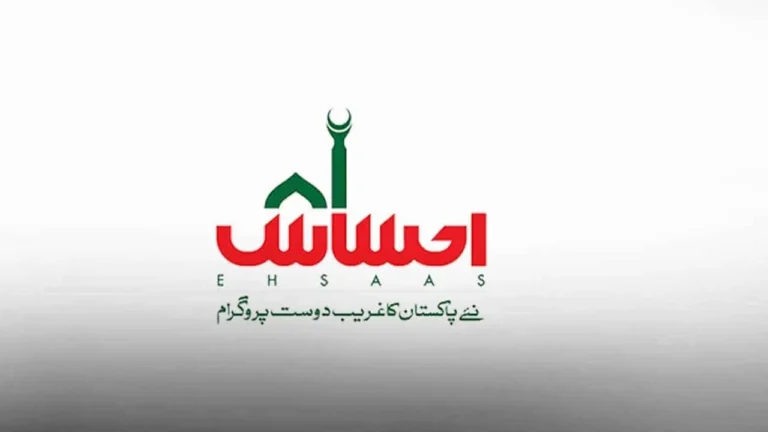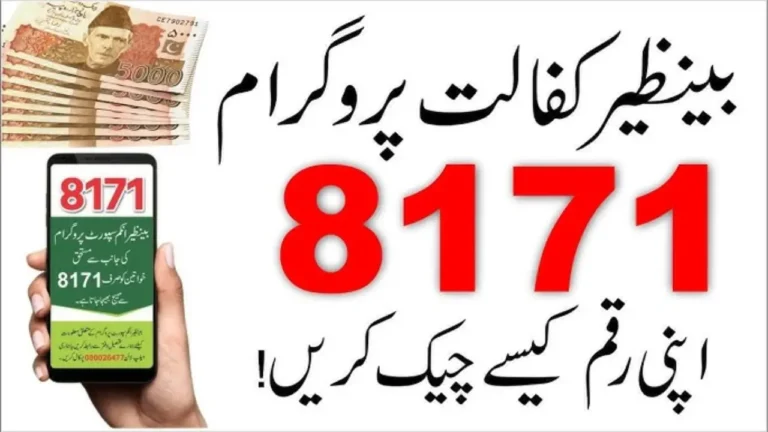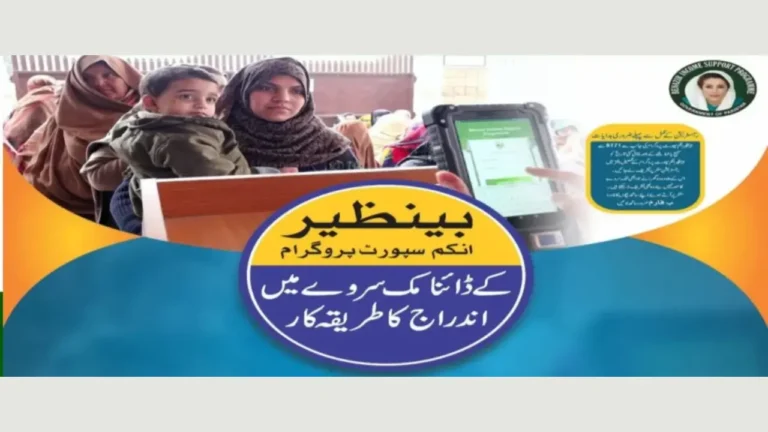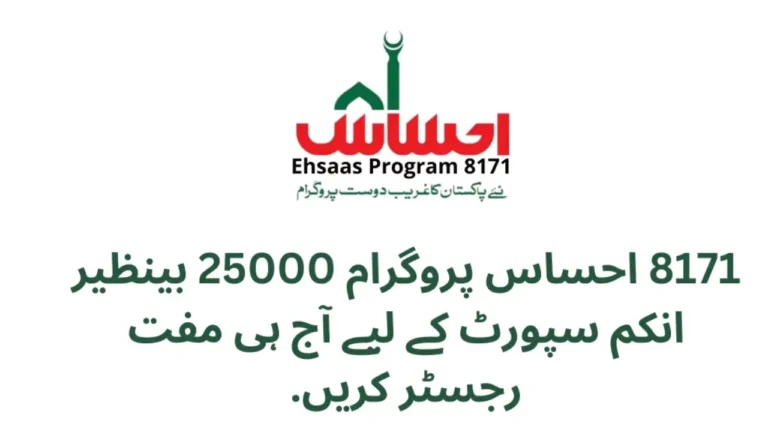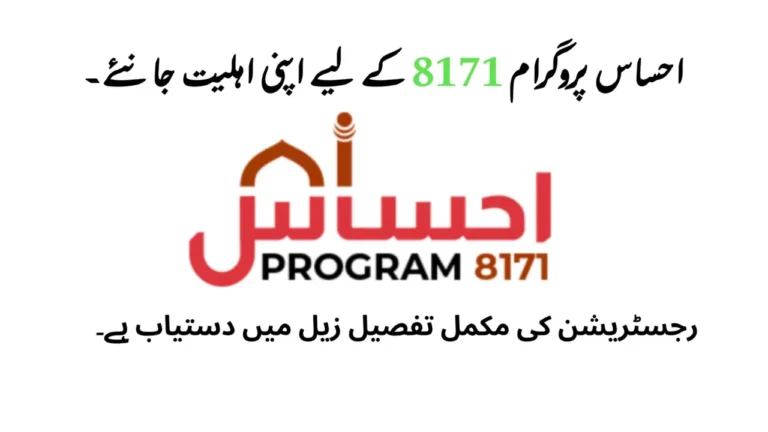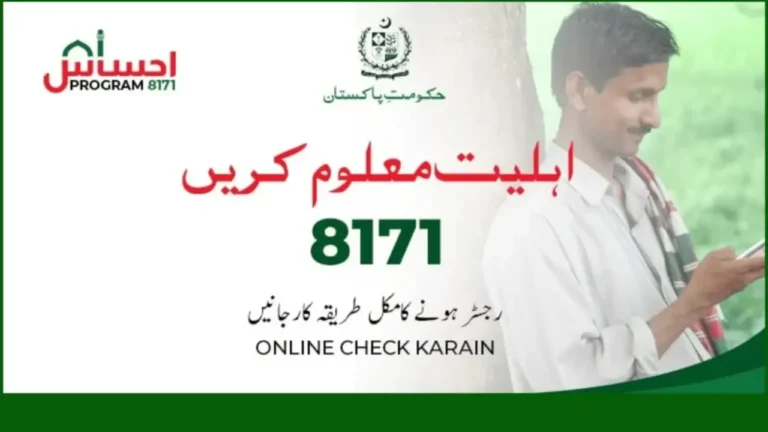Ehsaas Emergency Cash: Eligibility, Registration, and Updates
In 2025, the Ehsaas Emergency Cash Program continues to stand as one of Pakistan’s most impactful social protection initiatives. Originally launched in 2020 to provide relief during the COVID-19 pandemic, it has since evolved into a structured support system for low-income households struggling with inflation, unemployment, and economic uncertainty.
Now operating under the umbrella of the Benazir Income Support Programme (BISP), it still retains the trust of millions who know it as “Ehsaas.” This article explains eligibility, registration methods, and the latest updates for 2025, so that deserving families can access financial relief with clarity and confidence.
Eligibility Criteria for Ehsaas Emergency Cash 2025
To ensure transparency and fairness, the government has set clear rules for who qualifies. Not every citizen is eligible, and the program targets only those who genuinely need support. Here are the major criteria:
- Income Threshold: Families with monthly income below the poverty line (usually Rs. 25,000–30,000) are prioritized.
- Exclusion of Government Employees: Neither the applicant nor their spouse can be a federal or provincial government employee.
- No Foreign Travel: Individuals who have traveled abroad or applied for a passport with executive privileges are excluded.
- No Overlap with Other Aid Programs: Families already receiving aid under programs like BISP Kafaalat or Rashan Riayat cannot double-register.
- Verification through NSER: The National Socio-Economic Registry (NSER) data is used to cross-check applicants’ financial conditions.
These conditions ensure that funds go to those most in need, such as daily wage earners, widows, and households affected by inflation or disasters.
Registration and Eligibility Check Methods
The registration process has been simplified so families can apply without unnecessary hurdles. Applicants can use three main methods:
SMS Registration (8171 Service)
The easiest way is through mobile SMS. Citizens simply send their 13-digit CNIC number to 8171. Within minutes, they receive a response confirming whether they are eligible, under review, or need to visit a center.
Online Portal Registration
Applicants can also visit the official Ehsaas/BISP 8171 web portal. By entering their CNIC and a verification code, they can instantly check eligibility status. If found eligible, instructions are displayed for further steps.
In-Person Registration at Ehsaas or BISP Centers
For those without internet or mobile access, nearby Ehsaas/BISP One-Window Centers are available. Citizens bring their CNIC, undergo biometric verification (fingerprints), and complete the registration process with staff assistance.
This multi-channel approach helps urban and rural citizens equally.
Step-by-Step Process: From Registration to Cash Withdrawal
To make the process easier, here is the full journey from registration to receiving funds:
- Send CNIC via SMS (8171) or check through the portal.
- If eligible, you receive a confirmation message.
- Visit a designated payment center, bank branch, or retailer for biometric verification.
- Collect cash assistance after verification is completed.
- If ineligible, applicants may file an appeal through grievance systems or by visiting a BISP center.
Beneficiaries must always bring their original CNIC when withdrawing funds to prevent fraud.
Updates for Ehsaas Emergency Cash in 2025
The program has undergone several changes since its launch. Here are the latest updates for 2025:
a) Integration with BISP
Ehsaas Emergency Cash is now fully integrated with the Benazir Income Support Programme, though many people still call it “Ehsaas.” This integration strengthens funding, monitoring, and transparency.
b) Increased Financial Support
The program has gradually increased its payments. Where families once received Rs. 12,000, later Rs. 25,000, the government has now expanded quarterly stipends under BISP Kafaalat to Rs. 13,500 per family, in addition to emergency cash disbursements during crises.
c) Transparent Appeals through IGMS
The Integrated Grievance Management System (IGMS) has been introduced, allowing citizens to file appeals if they were wrongly marked ineligible. This has increased fairness and accountability.
d) Vocational Training Add-Ons
In 2025, a new initiative called Benazir Hunarmand has been launched alongside cash assistance. It provides skill training to youth so they can become financially independent rather than relying solely on aid.
e) Emergency Disbursements
Though originally pandemic-driven, the program still provides emergency relief packages during times of crisis, such as inflationary spikes, floods, or other natural disasters.
Challenges and Common Issues
While the program has achieved great success, beneficiaries sometimes face hurdles such as:
- Biometric Verification Failures: Some citizens, especially elderly people, struggle with fingerprint scans.
- Delays in Fund Disbursement: Large-scale rollouts occasionally slow down payment timelines.
- Scams and Fraud: Fake agents and SMS scams target vulnerable applicants. Authorities repeatedly warn beneficiaries to only use official channels like 8171 and government-approved centers.
The government is working on strengthening digital systems to minimize these issues.
Why Ehsaas Emergency Cash Matters in 2025
The importance of Ehsaas Emergency Cash cannot be overstated. In a country where millions live below the poverty line, even modest cash support makes a life-changing difference. Here’s why it continues to matter:
- Financial Relief: Provides immediate funds for food, medicine, and education.
- Women Empowerment: Payments are often directed to women heads of households, giving them financial control.
- Digital Inclusion: By using CNIC, mobile, and biometric systems, more citizens are being integrated into Pakistan’s financial system.
- Crisis Response: It acts as a rapid-response tool during natural disasters or economic emergencies.
The program has not only helped families survive during difficult times but has also laid the foundation for a more inclusive welfare system.
Overall Conclusion
The Ehsaas Emergency Cash 2025 program remains a lifeline for millions of Pakistanis. By combining transparency, digital verification, and accessibility, the government has ensured that relief reaches those who need it most.
If you believe you are eligible, the process is simple: send your CNIC to 8171, check online, or visit your nearest center. Remember to always carry your CNIC and avoid unofficial agents to prevent fraud.
For families struggling with financial uncertainty, this initiative is not just cash it is dignity, hope, and a pathway to resilience.
Frequently Asked Questions (FAQs)
How can I apply for Ehsaas Emergency Cash 2025?
You can apply by sending your 13-digit CNIC number to 8171, checking eligibility on the official 8171 portal, or visiting your nearest Ehsaas/BISP One-Window Center for in-person registration.
How much financial assistance is given in 2025?
Eligible families can receive Rs. 25,000 as emergency cash relief during crises. Additionally, quarterly stipends under the BISP Kafaalat program have been increased to Rs. 13,500.
Who is not eligible for the program?
Government employees, individuals who have traveled abroad, families already receiving similar aid, and those above the poverty threshold are not eligible.
How will I receive the payment?
Payments are distributed through biometric verification at designated banks, ATMs, or authorized retail shops. Beneficiaries must bring their original CNIC.
What should I do if I am declared ineligible?
If marked ineligible, you can file an appeal through the Integrated Grievance Management System (IGMS) or visit a nearby BISP One-Window Center for re-verification.
